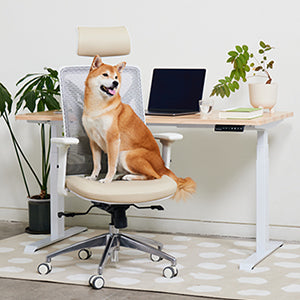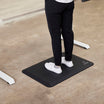The last two years posed as an international live experiment in remote work, when after COVID-19 was declared a pandemic, 88% of organizations worldwide made it mandatory or encouraged their employees to work from home. For the first time ever in North America, around 51 million people, all at the same time, dove into the new remote working style as it was being created, with no trial period available. This was a lightspeed turnaround from when as few as 3.4% of jobs enabled workers to take part in a flexible remote schedule before the pandemic, mandating that they be present in the office.
“The only thing holding back flexible work arrangements was a failure of imagination.That failure was remedied in three weeks’ time in March 2020.” – Joan Williams, director of the Center for WorkLife Law at UC Hastings

Suddenly shifting to work from home at the majority of organizations, workers everywhere had their daily routines undergo a complete transformation. The newfound flexibility of working remotely, for many, corrected the flaws they long took issue with from experience working in an office setting. A positive extra sprouting from the chaos of the worldwide shock, a 2021 report by Owl Labs found surprising data about remote work:
- 90% of full-time workers reported to being just as or more productive when working remotely
- 84% reported that the continuation of working from home after the pandemic would make them happier, many even willing to take a pay cut for it
- 74% reported that the continuation of working from home after the pandemic would be better for their mental health
Now that some companies have begun recalling their workers back to the office, it has left many dreading the return, and wondering if a full return will ever occur at all. What is the future of work from home?

Work From Home is a Here to Stay
Remote work is now a permanent fixture in workplace culture. The “new normal” that we search for entails a complete reworking of the standard accepted notions of what working today looks like, with leaders pushed to be increasingly inclusive of remote and hybrid work even without the pressures of pressing health restrictions and lockdowns.
The importance that companies adapt their practices to accommodate the shifting needs of workers, a majority of whom prefer remote and hybrid work, is emphasized by Ragu Bhargava, the CEO of Global Upside. 64% of workers would consider quitting if asked to return to the office full-time, and a record number already have, Bhargava insisting that this number will only continue to rise if companies do not evolve with our world.
“There’s this clinging narrative of a ‘return to normalcy’ that many employers are holding onto, when in fact, the world of work will never truly return to the way it was before. The pandemic revolutionized the workplace and expedited an already growing need for remote workers. The pandemic served as a massive wake-up call, teaching us not only that work was more than capable of being completed from home, but showing the need for flexibility for employees to take control of their own schedules—a necessity for those with long commutes, pricey childcare arrangements and those who simply wanted to spend more time with their families.” – Ragu Bhargava
The wave of resistance from workers to returning to the in-person work style of the past has emboldened us to question the ways that the system operated, and shown that this turbulence has been an opportunity to change the way we work to suit everyone better. For example, Salesforce introduced a new model called “success from anywhere”, allowing employees to select whether or not they want to be permanently remote going forward. Similarly, BNY Mellon announced to employees that they would have more freedom of choice in their work style compared to their peers in the industry.
When companies design the format of their work styles around the needs of their employees, not only are the employees more efficient and successful in their roles, but the improved mental wellbeing across the company makes the roles more competitive and valuable externally. People want to work at a place that cares about what they want.

What Will Work Look Like Post COVID-19?
The results from the last two years’ experiment will inform changes at every level, and every industry of the workforce. While the pandemic disrupted industries that require close physical proximity the most (medicine, travel, leisure, in-person entertainment), its rollout will affect every worker differently.
Remote work and virtual meetings will undoubtedly continue after the pandemic, but as some workers return to the office, either hybrid or fully in-person, we can expect the volume of Zoom meetings to be less intense than at the peak of the pandemic.

How Can We Prepare for a Post-COVID Corporate World?
Studies have proven that workers prefer that remote work continues after the pandemic, so to make the transition as efficient as possible, businesses should support workers by choosing the plan of action that will lead to more productivity and happiness, directly supporting the success of the business.
Since the ability for workers to participate in remote work is not equal across the population, notably how 20% of workers in rural households lack access to the internet, policymakers and governments can recognize the importance of supporting the digital infrastructure going forward with its permanent cementment in the accepted work style of the future.
As for workers, setting an at-home daily routine for yourself will bring some stability to an otherwise unstable world as we adjust, and prioritizing your health and productivity at home. Investing in a personal office space that is conducive to focus is more important than ever, and with remote working continuing, will exponentially improve the quality of the time you spend every day at work. The staples that were synonymous with work days – early mornings, long commutes, high heels and briefcases – may now fade into memory as only relics, and now you can choose what to define your days with. Choose to rise.

























